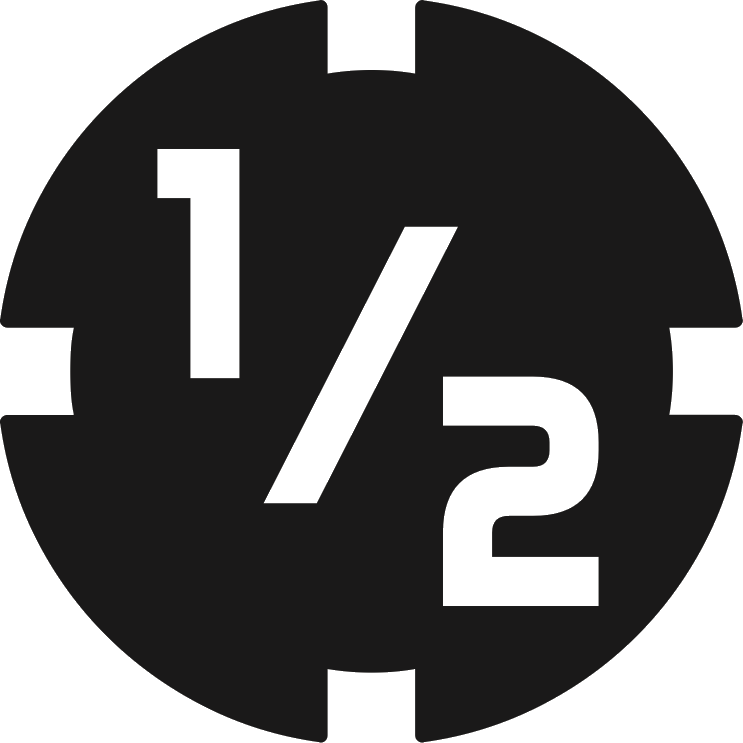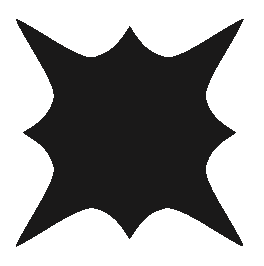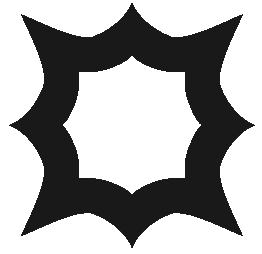Apply Dodge and Cover
- Determine Number of Obscured Miniatures: If the attack is not a ranged attack, skip to the Apply Dodge step below. If the attack is a ranged attack, the attacking player checks LOS from the attacking unit leader to each miniature in the defending unit. If LOS to a miniature is completely blocked, the miniature is obscured. If LOS from any part of the attacking unit leader’s silhouette to any part of the defending miniature’s silhouette is blocked by terrain that the attacking unit leader is not in base contact with and that terrain is at
 of the defending miniature, the defending miniature is obscured. Repeat this process for every miniature in the defending unit.
of the defending miniature, the defending miniature is obscured. Repeat this process for every miniature in the defending unit. - Determine Cover: If at least half of the miniatures in the defending unit are obscured, the defending unit has cover. The type of cover is determined by whatever is obscuring the defending unit, providing either heavy or light cover based on the players’ discussion of terrain before the game. If a unit has cover and at least one of the miniatures in the defending unit is obscured by terrain that provides heavy cover, the unit has heavy cover. If the defending unit has cover but does not have heavy cover, it has light cover.
While a unit is suppressed, it improves its cover by one: a unit with no cover gains light cover, and a unit in light cover gains heavy cover.
- Roll Cover Pool: If the defending unit has cover, the defending player rolls one white defense die for every
 result in the attack pool.
result in the attack pool. - Apply Cover: If the defending unit has light cover, it cancels one
 result in the attack pool for each
result in the attack pool for each  result in the cover pool. If the defending unit has heavy cover, it cancels one
result in the cover pool. If the defending unit has heavy cover, it cancels one  result in the attack pool for each
result in the attack pool for each  and each
and each  result in the cover pool instead.
result in the cover pool instead. - Apply Dodge: If the defending unit has one or more dodge tokens, the defending player may spend any number of them. For each dodge token spent, cancel one
 result in the attack pool. Units may spend dodge tokens even if there are no
result in the attack pool. Units may spend dodge tokens even if there are no  results in the attack pool.
results in the attack pool.
Summer’s Clone Troopers are attacking Brian’s unit of 7 Battle Droids with a ranged attack; she has rolled 1  and 3
and 3  results. Summer then checks LOS from the Clone Troopers’ unit leader to each miniature in the Battle Droid unit. Summer has LOS to every miniature in the Battle Droid unit, but part of the silhouette of 5 Battle Droids is blocked by terrain. Brian then measures the distance between those Battle Droids and the obscuring terrain. Since 4 of them are at
results. Summer then checks LOS from the Clone Troopers’ unit leader to each miniature in the Battle Droid unit. Summer has LOS to every miniature in the Battle Droid unit, but part of the silhouette of 5 Battle Droids is blocked by terrain. Brian then measures the distance between those Battle Droids and the obscuring terrain. Since 4 of them are at  of the obscuring terrain, those 4 miniatures are obscured.Because at least half of the Battle Droids are obscured, the Battle Droids have cover. Before the game, Brian and Summer determined that the building provides heavy cover and the crates provide light cover. Because at least 1 of the Battle Droids is obscured by the building, the Battle Droids have heavy cover.Brian then rolls 3 white defense dice in the cover pool, 1 for each
of the obscuring terrain, those 4 miniatures are obscured.Because at least half of the Battle Droids are obscured, the Battle Droids have cover. Before the game, Brian and Summer determined that the building provides heavy cover and the crates provide light cover. Because at least 1 of the Battle Droids is obscured by the building, the Battle Droids have heavy cover.Brian then rolls 3 white defense dice in the cover pool, 1 for each  result. Brian rolls 1 blank result and 2
result. Brian rolls 1 blank result and 2  results.Because the Battle Droids have heavy cover, 2
results.Because the Battle Droids have heavy cover, 2  results are canceled in the attack roll, 1 for each
results are canceled in the attack roll, 1 for each  and
and  result in the cover pool. That leaves 1
result in the cover pool. That leaves 1  and 1
and 1  result in the attack pool.Brian’s Battle Droids do not have any dodge tokens, so the Apply Dodge and Cover step of the attack is over.
result in the attack pool.Brian’s Battle Droids do not have any dodge tokens, so the Apply Dodge and Cover step of the attack is over.
 and 3
and 3  results. Summer then checks LOS from the Clone Troopers’ unit leader to each miniature in the Battle Droid unit. Summer has LOS to every miniature in the Battle Droid unit, but part of the silhouette of 5 Battle Droids is blocked by terrain. Brian then measures the distance between those Battle Droids and the obscuring terrain. Since 4 of them are at
results. Summer then checks LOS from the Clone Troopers’ unit leader to each miniature in the Battle Droid unit. Summer has LOS to every miniature in the Battle Droid unit, but part of the silhouette of 5 Battle Droids is blocked by terrain. Brian then measures the distance between those Battle Droids and the obscuring terrain. Since 4 of them are at  of the obscuring terrain, those 4 miniatures are obscured.Because at least half of the Battle Droids are obscured, the Battle Droids have cover. Before the game, Brian and Summer determined that the building provides heavy cover and the crates provide light cover. Because at least 1 of the Battle Droids is obscured by the building, the Battle Droids have heavy cover.Brian then rolls 3 white defense dice in the cover pool, 1 for each
of the obscuring terrain, those 4 miniatures are obscured.Because at least half of the Battle Droids are obscured, the Battle Droids have cover. Before the game, Brian and Summer determined that the building provides heavy cover and the crates provide light cover. Because at least 1 of the Battle Droids is obscured by the building, the Battle Droids have heavy cover.Brian then rolls 3 white defense dice in the cover pool, 1 for each  result. Brian rolls 1 blank result and 2
result. Brian rolls 1 blank result and 2  results.Because the Battle Droids have heavy cover, 2
results.Because the Battle Droids have heavy cover, 2  results are canceled in the attack roll, 1 for each
results are canceled in the attack roll, 1 for each  and
and  result in the cover pool. That leaves 1
result in the cover pool. That leaves 1  and 1
and 1  result in the attack pool.Brian’s Battle Droids do not have any dodge tokens, so the Apply Dodge and Cover step of the attack is over.
result in the attack pool.Brian’s Battle Droids do not have any dodge tokens, so the Apply Dodge and Cover step of the attack is over.